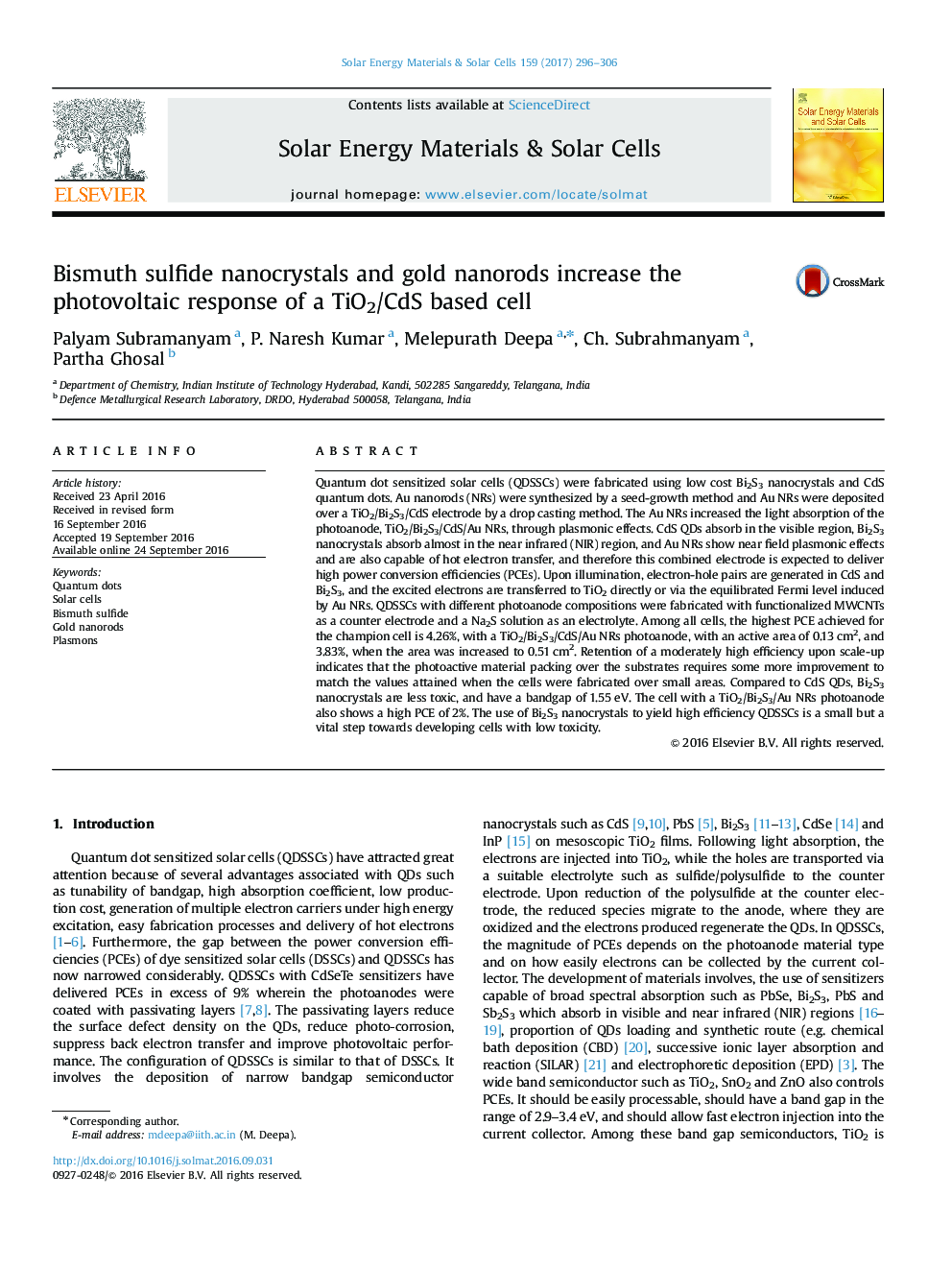| کد مقاله | کد نشریه | سال انتشار | مقاله انگلیسی | نسخه تمام متن |
|---|---|---|---|---|
| 6457505 | 1420664 | 2017 | 11 صفحه PDF | دانلود رایگان |

- A TiO2/Bi2S3/CdS/Au NRs (nanorods) photoanode was prepared.
- CdS and Bi2S3 quantum dots absorb in the blue-green and red regions.
- A TiO2/Bi2S3/CdS/Au NRs photoanode based cell shows an efficiency of 4.26%.
- Au NRs increase photocurrent density and photovoltage.
- Impedance shows low charge transfer resistance and high conductance for this cell.
Quantum dot sensitized solar cells (QDSSCs) were fabricated using low cost Bi2S3 nanocrystals and CdS quantum dots. Au nanorods (NRs) were synthesized by a seed-growth method and Au NRs were deposited over a TiO2/Bi2S3/CdS electrode by a drop casting method. The Au NRs increased the light absorption of the photoanode, TiO2/Bi2S3/CdS/Au NRs, through plasmonic effects. CdS QDs absorb in the visible region, Bi2S3 nanocrystals absorb almost in the near infrared (NIR) region, and Au NRs show near field plasmonic effects and are also capable of hot electron transfer, and therefore this combined electrode is expected to deliver high power conversion efficiencies (PCEs). Upon illumination, electron-hole pairs are generated in CdS and Bi2S3, and the excited electrons are transferred to TiO2 directly or via the equilibrated Fermi level induced by Au NRs. QDSSCs with different photoanode compositions were fabricated with functionalized MWCNTs as a counter electrode and a Na2S solution as an electrolyte. Among all cells, the highest PCE achieved for the champion cell is 4.26%, with a TiO2/Bi2S3/CdS/Au NRs photoanode, with an active area of 0.13Â cm2, and 3.83%, when the area was increased to 0.51Â cm2. Retention of a moderately high efficiency upon scale-up indicates that the photoactive material packing over the substrates requires some more improvement to match the values attained when the cells were fabricated over small areas. Compared to CdS QDs, Bi2S3 nanocrystals are less toxic, and have a bandgap of 1.55Â eV. The cell with a TiO2/Bi2S3/Au NRs photoanode also shows a high PCE of 2%. The use of Bi2S3 nanocrystals to yield high efficiency QDSSCs is a small but a vital step towards developing cells with low toxicity.
362
Journal: Solar Energy Materials and Solar Cells - Volume 159, January 2017, Pages 296-306